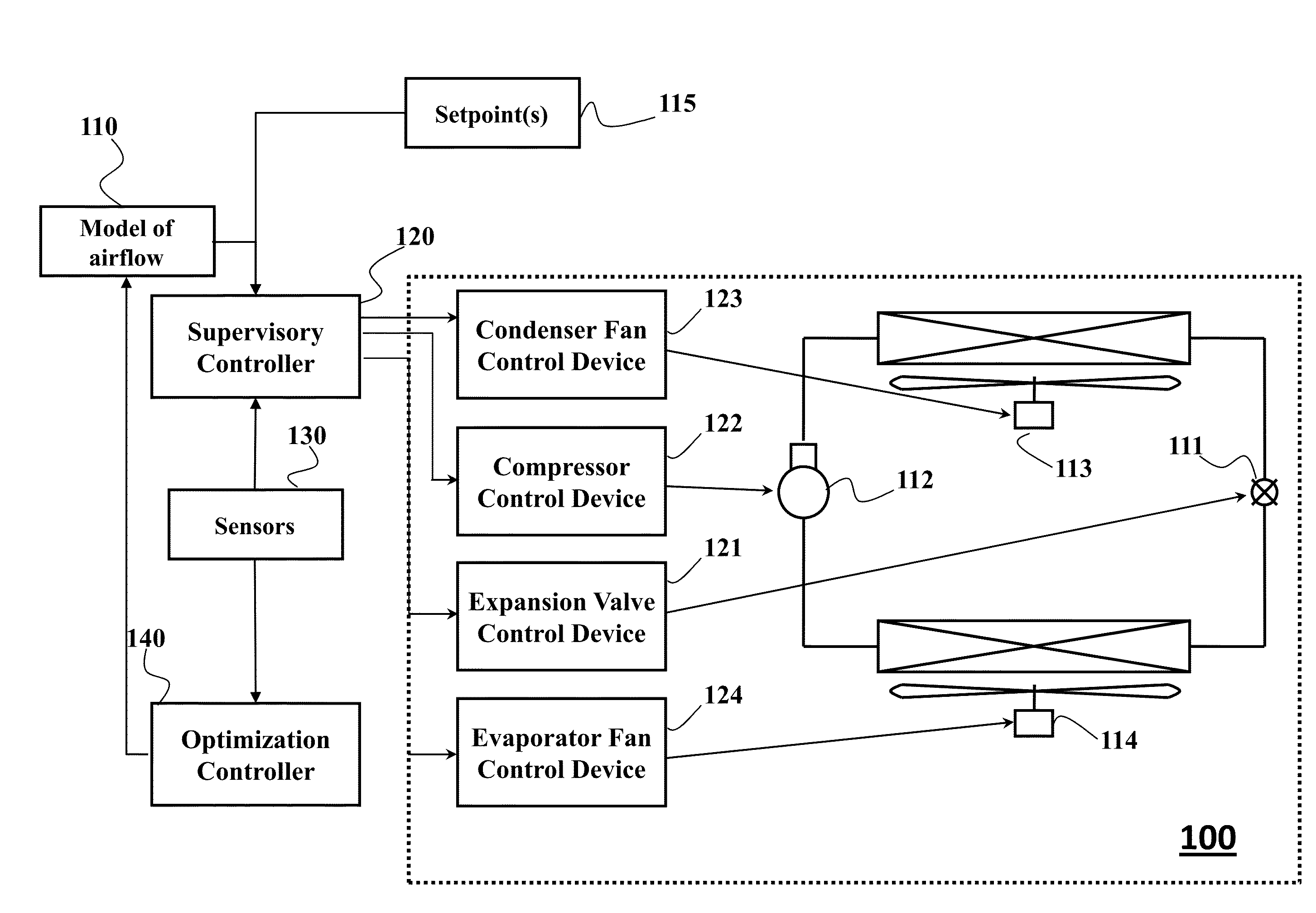System and Method for Controlling Operations of Air-Conditioning System
a technology of air-conditioning system and control system, which is applied in the direction of lighting and heating apparatus, heating types, instruments, etc., can solve the problems of inability to accurately describe the cost function representing the tracking error is reduced, and the model that accurately describes the operation of vapor compression system at one point in time may not be accurate at a later time. , to achieve the effect of reducing the cost function, reducing the error, and reducing the error
- Summary
- Abstract
- Description
- Claims
- Application Information
AI Technical Summary
Benefits of technology
Problems solved by technology
Method used
Image
Examples
Embodiment Construction
[0036]FIG. 1A shows a block diagram of an air-conditioning system 100 according to one embodiment of the invention. The system 100 can include one or a combination of components such an evaporator fan 114, a condenser fan 113, an expansion valve 111, and a compressor 112. The system can be controlled by a controller 120 responsible for accepting set-points 115, e.g., from a thermostat, and readings of a sensor 130, and outputting a set of control signals for controlling operation of the components. A supervisory controller 120 is operatively connected to a set of control devices for transforming the set of control signals into a set of specific control inputs for corresponding components. For example, the supervisory controller is connected to a compressor control device 122, to an expansion valve control device 121, to an evaporator fan control device 124, and to a condenser fan control device 123.
[0037]The supervisory controller is operatively connected to a model of the airflow d...
PUM
 Login to View More
Login to View More Abstract
Description
Claims
Application Information
 Login to View More
Login to View More - R&D
- Intellectual Property
- Life Sciences
- Materials
- Tech Scout
- Unparalleled Data Quality
- Higher Quality Content
- 60% Fewer Hallucinations
Browse by: Latest US Patents, China's latest patents, Technical Efficacy Thesaurus, Application Domain, Technology Topic, Popular Technical Reports.
© 2025 PatSnap. All rights reserved.Legal|Privacy policy|Modern Slavery Act Transparency Statement|Sitemap|About US| Contact US: help@patsnap.com



